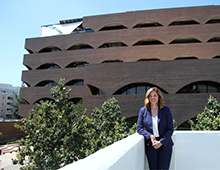Not All Mayors Are Created Equal
Published: 4/9/2021
Not All Mayors Are Created Equal
An Editorial by Mayor Patricia Lock Dawson
Riverside stands as the 13th largest city in the state. No longer are we a small citrus town, but rather, Riverside is a thriving city—the largest city in our expansive county and the urban center of Inland Southern California. Since 1909, the Mayor of Riverside has been the only city-wide elected official. Fast forward 112 years and 18 mayors later, the role of the mayor in leading our City is outlined in our City Charter. The City Charter, our city’s “constitution,” is amended by a review commission and ratified by the voters every eight years. The way the Mayor’s role is outlined in the City Charter states, “The Mayor shall be the official head of the City for all ceremonial purposes. The Mayor shall have the primary but not exclusive responsibility for interpreting the policies, programs and needs of the City government to the people. The Mayor shall advise the City Council on all matters of policy and public relations...” This outlined role is unique to Riverside. Each of the state’s 482 incorporated cities have mayors—either elected mayors or City Council members rotating in a mayoral role. A phrase one could use in reference to this topic is, “Not all mayors are created equal,” and that means that the powers and abilities of each mayor do differ.
Political aficionados will know of the varying levels of mayoral powers. The most well known is the “Strong Mayor” form of city government. This is where the elected mayor carries executive authority over all city policies and operations. Of the 482 incorporated cities in California, only five (San Diego, Los Angeles, Fresno, Oakland and San Francisco) have a mayoral role that has greater governmental powers. For the remaining 477 cities, Riverside included, the role of the mayor is largely ceremonial which proposes numerous challenges for taking on large urban challenges like homelessness, budget constraints, and for today—COVID-19 management and recovery. Mayors that are elected and serve large cities in full-time capacities are looked to by the electorate as the sole responsible person for all happenings in the city despite having little executive authority beyond influence that comes with the title. What is done by mayors in Los Angeles, San Francisco, Oakland, and others of the five “Strong Mayor” cities, is not always an option for the mayoral role in cities like Riverside.
But despite not having executive authority over all city policies and operations, my team continues to deliver results that are much more than just “ceremonial.” Anything to do with fostering international relations, cross-global economic opportunities, securing funding from our state, and providing regular assistance to constituents from all segments of Riverside’s 326,000 residents comes through my office daily. After two months on the job, we have hit the ground running and continuously punch above our weight. So, even with parameters of the mayoral role in Riverside, we remain a player in the state and a model for many surrounding cities that look to our successes for their own cities. The task that lies before my team and I, along with mayors of the other 477 cities is how we use our roles and influence to lead local policy discussions and accomplish all that we can within the mayoral powers as approved by the voters through the City Charter.


